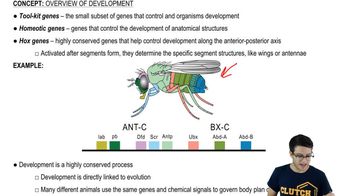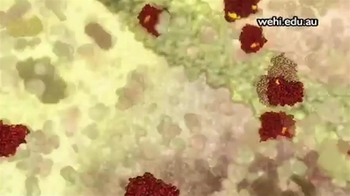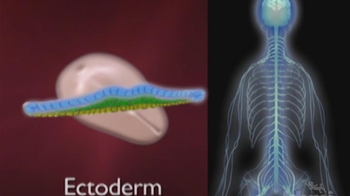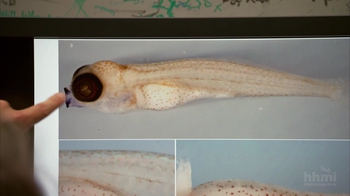Table of contents
- 1. Introduction to Biology2h 42m
- 2. Chemistry3h 40m
- 3. Water1h 26m
- 4. Biomolecules2h 23m
- 5. Cell Components2h 26m
- 6. The Membrane2h 31m
- 7. Energy and Metabolism2h 0m
- 8. Respiration2h 40m
- 9. Photosynthesis2h 49m
- 10. Cell Signaling59m
- 11. Cell Division2h 47m
- 12. Meiosis2h 0m
- 13. Mendelian Genetics4h 44m
- Introduction to Mendel's Experiments7m
- Genotype vs. Phenotype17m
- Punnett Squares13m
- Mendel's Experiments26m
- Mendel's Laws18m
- Monohybrid Crosses19m
- Test Crosses14m
- Dihybrid Crosses20m
- Punnett Square Probability26m
- Incomplete Dominance vs. Codominance20m
- Epistasis7m
- Non-Mendelian Genetics12m
- Pedigrees6m
- Autosomal Inheritance21m
- Sex-Linked Inheritance43m
- X-Inactivation9m
- 14. DNA Synthesis2h 27m
- 15. Gene Expression3h 20m
- 16. Regulation of Expression3h 31m
- Introduction to Regulation of Gene Expression13m
- Prokaryotic Gene Regulation via Operons27m
- The Lac Operon21m
- Glucose's Impact on Lac Operon25m
- The Trp Operon20m
- Review of the Lac Operon & Trp Operon11m
- Introduction to Eukaryotic Gene Regulation9m
- Eukaryotic Chromatin Modifications16m
- Eukaryotic Transcriptional Control22m
- Eukaryotic Post-Transcriptional Regulation28m
- Eukaryotic Post-Translational Regulation13m
- 17. Viruses37m
- 18. Biotechnology2h 58m
- 19. Genomics17m
- 20. Development1h 5m
- 21. Evolution3h 1m
- 22. Evolution of Populations3h 52m
- 23. Speciation1h 37m
- 24. History of Life on Earth2h 6m
- 25. Phylogeny2h 31m
- 26. Prokaryotes4h 59m
- 27. Protists1h 12m
- 28. Plants1h 22m
- 29. Fungi36m
- 30. Overview of Animals34m
- 31. Invertebrates1h 2m
- 32. Vertebrates50m
- 33. Plant Anatomy1h 3m
- 34. Vascular Plant Transport1h 2m
- 35. Soil37m
- 36. Plant Reproduction47m
- 37. Plant Sensation and Response1h 9m
- 38. Animal Form and Function1h 19m
- 39. Digestive System1h 10m
- 40. Circulatory System1h 57m
- 41. Immune System1h 12m
- 42. Osmoregulation and Excretion50m
- 43. Endocrine System1h 4m
- 44. Animal Reproduction1h 2m
- 45. Nervous System1h 55m
- 46. Sensory Systems46m
- 47. Muscle Systems23m
- 48. Ecology3h 11m
- Introduction to Ecology20m
- Biogeography14m
- Earth's Climate Patterns50m
- Introduction to Terrestrial Biomes10m
- Terrestrial Biomes: Near Equator13m
- Terrestrial Biomes: Temperate Regions10m
- Terrestrial Biomes: Northern Regions15m
- Introduction to Aquatic Biomes27m
- Freshwater Aquatic Biomes14m
- Marine Aquatic Biomes13m
- 49. Animal Behavior28m
- 50. Population Ecology3h 41m
- Introduction to Population Ecology28m
- Population Sampling Methods23m
- Life History12m
- Population Demography17m
- Factors Limiting Population Growth14m
- Introduction to Population Growth Models22m
- Linear Population Growth6m
- Exponential Population Growth29m
- Logistic Population Growth32m
- r/K Selection10m
- The Human Population22m
- 51. Community Ecology2h 46m
- Introduction to Community Ecology2m
- Introduction to Community Interactions9m
- Community Interactions: Competition (-/-)38m
- Community Interactions: Exploitation (+/-)23m
- Community Interactions: Mutualism (+/+) & Commensalism (+/0)9m
- Community Structure35m
- Community Dynamics26m
- Geographic Impact on Communities21m
- 52. Ecosystems2h 36m
- 53. Conservation Biology24m
20. Development
Developmental Biology
Problem 4`
Textbook Question
Cell differentiation always involves
a. Transcription of the myoD gene.
b. The movement of cells.
c. The production of tissue-specific proteins.
d. The selective loss of certain genes from the genome.
 Verified step by step guidance
Verified step by step guidance1
Understand the concept of cell differentiation: Cell differentiation is the process by which a less specialized cell becomes a more specialized cell type. It is crucial for the development of tissues and organs in multicellular organisms.
Consider the role of gene expression in differentiation: Differentiation involves changes in gene expression, where specific genes are turned on or off to produce proteins necessary for the cell's specialized function.
Evaluate the options: a) Transcription of the myoD gene is specific to muscle cell differentiation, not all cell types. b) Movement of cells is related to morphogenesis, not directly to differentiation. c) Production of tissue-specific proteins is a hallmark of differentiation, as different cell types produce different proteins. d) Selective loss of genes is not a mechanism of differentiation; all cells retain the full genome.
Focus on the production of tissue-specific proteins: During differentiation, cells produce proteins that are specific to their function, such as hemoglobin in red blood cells or insulin in pancreatic cells.
Conclude that the production of tissue-specific proteins is a universal aspect of cell differentiation, making option c the most accurate choice.
 Verified video answer for a similar problem:
Verified video answer for a similar problem:This video solution was recommended by our tutors as helpful for the problem above
Video duration:
2mPlay a video:
Was this helpful?
Key Concepts
Here are the essential concepts you must grasp in order to answer the question correctly.
Cell Differentiation
Cell differentiation is the process by which a less specialized cell becomes a more specialized cell type. It is crucial for the development of multicellular organisms, allowing cells to acquire specific functions. This process involves changes in gene expression, enabling cells to produce proteins necessary for their specialized roles.
Recommended video:
Guided course

Cell Division and Differentiation
Gene Expression
Gene expression is the process by which information from a gene is used to synthesize functional gene products, typically proteins. This process is tightly regulated and involves transcription and translation. In cell differentiation, specific genes are expressed to produce proteins that define the cell's function and identity.
Recommended video:
Guided course

Introduction to Regulation of Gene Expression
Tissue-Specific Proteins
Tissue-specific proteins are proteins that are expressed in particular cell types, contributing to the unique functions of those tissues. During cell differentiation, the production of these proteins is a key step, as they enable cells to perform specialized tasks, such as muscle contraction or nerve impulse transmission, depending on the tissue type.
Recommended video:
Guided course

Vascular Tissue

 5:28m
5:28mWatch next
Master Cell Division and Differentiation with a bite sized video explanation from Jason
Start learningRelated Videos
Related Practice



























![Drosophila Embryogenesis - Anterior/Posterior Patterning [English Captions]](https://img.youtube.com/vi/ZOzKXrOGtgw/mqdefault.jpg)



















